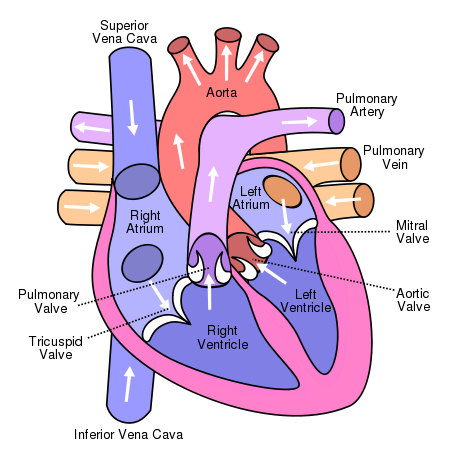Not many people will probably remember/know this, but
Frick and Frack were a comedy skating team that started performing in the
Ice Follies in 1936. They wore lederhosen and although indistinguishable to most people, they each developed their own tricks, including the "cantilever spread-eagle" created by Frick and a rubber-legged gag designed by Frack. They were so well loved that their names became slang in many languages. To call two people "Frick and Frack" nowadays (aside from being a bit of an anachronism) generally is to call two people inseparable. Sometimes it is used in a not very flattering way to mean two goofballs or stooges. My twins are a lot like that; inseparable, indistinguishable to some people at first, both working their own tricks and being completely silly the entire time. They are delightful and adorable and as funny as hell. All that is missing is the lederhosen... but unless those come in super absorbent, I wouldn't recommend they wear leather pants.
We've had a flurry of development in the last week; it's been hard to keep up with it all to be honest. Both kids have developed their own unique tricks, most of which have been repeated many times for our amusement. I'm not sure if Zoe is emulating her brother's pattern of "nothing, nothing, nothing... MASTERY!" for different things, but it has sure seemed that way. Within two days she had found her nose, learned two signs, said a new word and tried to dress herself. Of course I was at work and missed a lot of it, but I got the news from Sean.
The nose thing has been a long time coming for both of them. Early on when they would grab our noses, we'd make honking noises. (We are
that family). With Wyatt, it got to the point where that was all he wanted to do when I held him. My nose was actually sore from the squeezing of little hands. A couple of weeks ago I stopped making traffic noises when they would grab my schnoz and instead started sing-songing the word "nose". At first it confused both of them as that was totally not the reaction they were expecting. Zoe took it one step farther the other night when I asked "where's Daddy's nose?" and she made a grab for the paternal proboscis. "Where's Zoe's nose?" was the inevitable next question and we were both delighted as she grinned and pinched her own honker. That grin wore off shortly thereafter as she tired of doing it over and over again to the squeals of her crazy parents, but for a few minutes there, we were all about
le nez.
Last Sunday was a banner day for our little Miss as she not only said her first English word (other than Dada). It was "up" and used correctly. Sean was getting the babies ready and turning to Zoe who was anxiously bouncing in her crib, said "Zoe, up?". According to him, she stretched out her arms and repeated "UP! UP, UP, UP!" and flashed him her thousand kilowatt smile when she was picked up. I was at work and missed the whole thing, but I got the proud parent phone call shortly after to tell me the good news.
I got another call a few hours later when at suppertime, She let Sean know that she wanted more applesauce by making the sign for "
more" by banging her hands together. It's no big secret that Zoe is a screamer. It's become even more pronounced lately when she Tarzan yells/trumpets/air raid klaxons to get your attention or to chide you for not understanding what she wants. She's easily frustrated as her understanding of language is much higher than her capacity to express it. I started really reinforcing the sign language last Friday as I was alone with the babies for most of the day. "More", "
milk", "
mama", "
dada" were re-introduced, with an emphasis on "more" and "milk". At supper that night, Sean asked "You want more?" and she made the sign and hollered, but settled down a bit once she saw that he was preparing more food. It was a bit of a superstar moment. That night, once I was home from work and we were both getting them ready for bed, I asked "Milk, Zoe?" and made the sign. I was astounded to see her frantically sign "milk" with both hands and get ready for a feed. It was awesome.
One of her more comedic moments came a day later when she pulled a baby shoe out of the basket in the living room and toddled over to where Wyatt and I were sitting on the floor. She first held it out to me and babbled at me a bit, then lifted her foot while reaching down to try and put the shoe on it. She naturally stumbled forward and had to reset herself, but immediately reached down to put the shoe on again. And again. And again. She looked like a drunk trying to figure out how to put their boots on the right feet to go home. She was laughing along with me with occasional barrages of staccato Zoe-se. She must have done this for a good four or five minutes before finally babbling in disgust and thrusting the shoe at me as if to say "You do it!". I held it up and asked "what do you want me to do with this?" She responded by lifting her foot up for me to see while perfectly balancing on one leg. I started laughing uncontrollably at this point and tears started to come out of my eyes a second or so later when she landed on her butt with a decided plop. She never did get that shoe on.
Wyatt has made some distinct inroads as well. As an addendum to our
A Smooth Road post, he has connected "up" and "down" with an action, in this case raising and lowering his arms. Before it was only in the context of the song, now he will respond to "up" and "down" as commands by raising and lowering his arms appropriately. It is very cute as he will reach forward and grab your fingers and then smile and laugh as he goes "up!".
Last week sometime, as we were putting the kids to bed, Wyatt said "Zazazaza". Now, like any other vocalization that any of our kids have done, we said it back to him. It had the desired response as he giggled maniacally and did it over an over and over again. Like any other sound, with any other kid, we tried to attach a meaning to it. "Zoe?" we asked him. "Za-za-za Zoe?" More giggling (and a little shouting from Zoe). It was just another random moment in the life of pre-verbal toddlers.
You can imagine our surprise then, a few days afterwards at a speech-language assessment when we were told that little sound was pretty significant. The 'Z' sound, as it turns out, is a pretty hard sound to make; they were surprised that Zoe could make similar noises. That sound, along with sounds like "V", "S" are known as
fricatives and are pretty difficult sounds for little people to make. In fact, children do not typically master these sounds until age 4. I nodded and smiled at the time, but you have to admit, that is pretty cool. Wyatt is also the master of the raspberry, an action that the late great George Carlin called a "bilabial fricative". Sadly, George was incorrect; there is a
bilabial fricative, but it is closer to the regular fricative than a bronx cheer. (BTW: he can do these too). What he is actually doing is a
linguolabial trill, which is also pretty significant. Fast, slow, metered, responsive... this kid has a "thhhhpppppttthhh!" for every occasion. Which is awesome. As is the "click" he can do with his tongue and the roof of his mouth. He's got some pretty good oral-facial muscles, a fact that by itself, makes all the breastfeeding worth it..
It's not that surprising to me as my boys seem to develop their speech sounds before their motor skills. Quinn, for example, was not walking until he was almost 2, but he had an extensive vocabulary. He was an enormous chunk of a kid (thanks to early weaning and formula) and in the words of one of my closest friends, he was all "Legs? What are they good for?" Wyatt seems to be following in his brothers non-footsteps as he is not interested in putting weight on his feet. We still try however, making sure that we try a little weight bearing exercise every day. He is building his leg and core muscles on his own though. When left on the floor to roll around a bit, I will often find him with his feet up on a large object (such as the couch) and pushing against it for resistance. I've also seen him frequently lift his bum off the floor doing pelvic lifts. It's fascinating to watch; it's almost like he knows he has to work on his muscles a little more. I'm sure he really gets the hint when Zoe walks by and randomly tries to pull him up by his ears.
Our last major hurray of the week is also courtesy of our wee man. Aside from emitting noises when tweaking facial features, we are also random wavers. It's not unusual for us to look over if there is a pause in the conversation and wave at one of the kids. Sean was treated to a real surprise at breakfast yesterday when Wyatt actually waved back. He's been doing what, to be honest, we thought was flapping for quite some time. Now however, it has a purpose as he will gleefully wave back, using his whole arm and giving that smile that lights up his whole face while simultaneously squeezing your heart.
Long ago, I used to have a necklace that my mother gave me that read "Live, Love, Laugh". I'm not sure what happened to it, but I've never really strayed too far from its simple philosophy. Life is for love and laughter and our little family is blessed with bucketfuls of both. There are times that are harder than others, that is for sure. There are still days that I cry in the shower; not because my son has Down Syndrome but because he was born into a world that rewards ignorance and prejudice. However, my tears are usually dry long before my rebellious hair and it's not long afterwards that I am belly laughing at new antics or marveling at some new feat. In actuality, my little troupe may not be as well received as Frick and Frack, but we headline our own living room seven days a week. Come by some time, we're not going anywhere anytime soon. Be sure to try the veal if you do.











